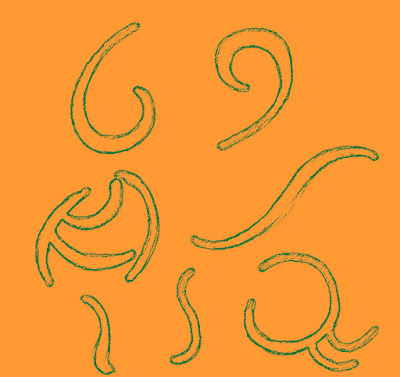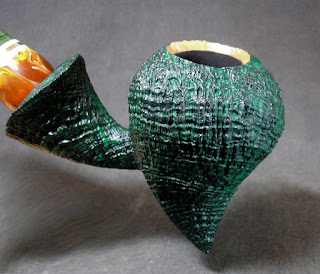It's that time of year again!
Although, in our case, a rather challenging time of year... Our Halloween pipe production has waxed and waned over the years depending on the circumstances of the moment - It's not always possible to set aside the long stretches of working time needed to make elaborate Talbert Halloween Pipes. This year has been exceptionally difficult. I've detailed in other posts some of the family health issues we've had, but in a nutshell, my wife's parents are both elderly and her father fell and broke his arm in two places. It turned out to be a particularly nasty break and he's just come through the second surgery for it, after spending the entire summer in a recovery home from the first surgery. The results for him are promising, we hope - Multiple steel bars implanted in his arm means he'll never get through a metal detector again, but he now has a hinged steel elbow to boot. The downside is that he's going to be in a recovery home all through this month and probably next, and we are having our time split in several directions by visiting and helping out my mother-in-law with house care, errands, etc, as she is no spring chicken herself and is now on her own for an extended period.
So... with all that on our plate, the initial plan was to have no special Halloween pipes this year. However, that decision started changing when we found this new little show on Netflix called Stranger Things, which managed to perfectly nail the sort of gleeful, "out after dark" autumn fun ambiance that I run on like gasoline. I knew I had to do something this year. It just had to be something more adaptable to my fractured workdays than complex Talbert Briars that would need nine uninterrupted hours of focused working time every day to get right.
My solution is this - The Ligne Bretagne October Pumpkins! A set of wickedly carved Jack-O-Lanterns would allow me to utilize the basic template of our regular Ligne Bretagnes for labor savings and put all my working time into the carving details, making the pipes more affordable (much) for fans who don't have a grand or more for a Talbert Halloween, while making them repeatable designs (at least to an extent), so I can make them to order.
Yes, you read that right - We are making these to order. If you want an October Pumpkin, you can order one off of their catalog page and we'll make it for you! So go check out Pumpkin #1 and Pumpkin #2.
This is a limited time offer!
I plan on making these through the rest of September and into October, as many as I feel I can reasonably be sure of finishing and getting to their owners by Halloween. The goal is for everyone who wants one to have their pipes by October 31st. That means - I don't know how long they will be on offer. If sales are ideal, I'd love to be taking orders and shipping pipes from now right through to the week of Halloween. If, however, we get a deluge of orders right off the bat, I will shut down the catalog pages when I feel I've got as many orders as I can reasonably handle and be confident of getting finished in time.
So, the answer is... They'll be available for order from now until sometime. I should be able to give a better estimate after I see what the initial sales are like.
Happy Halloween!




































